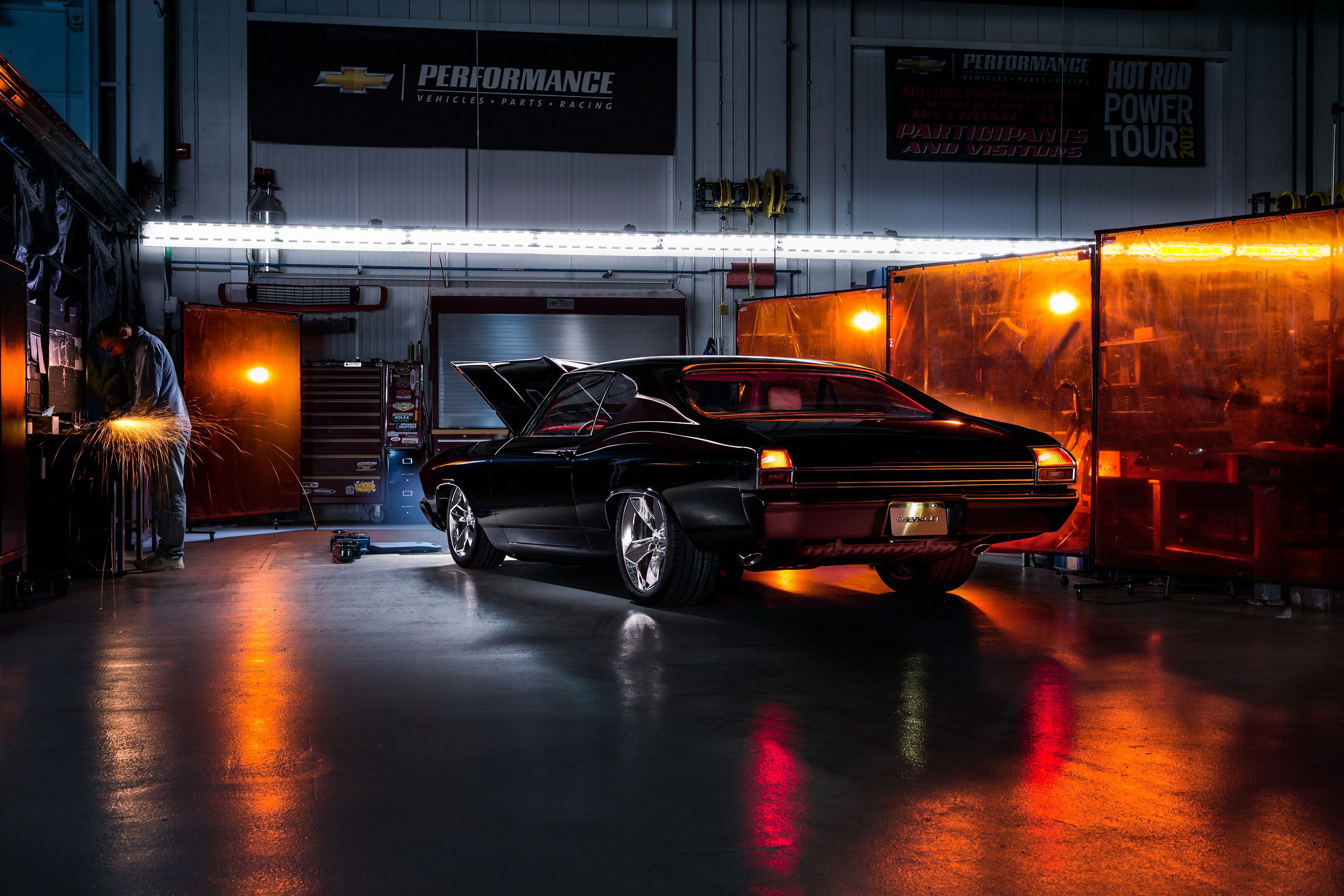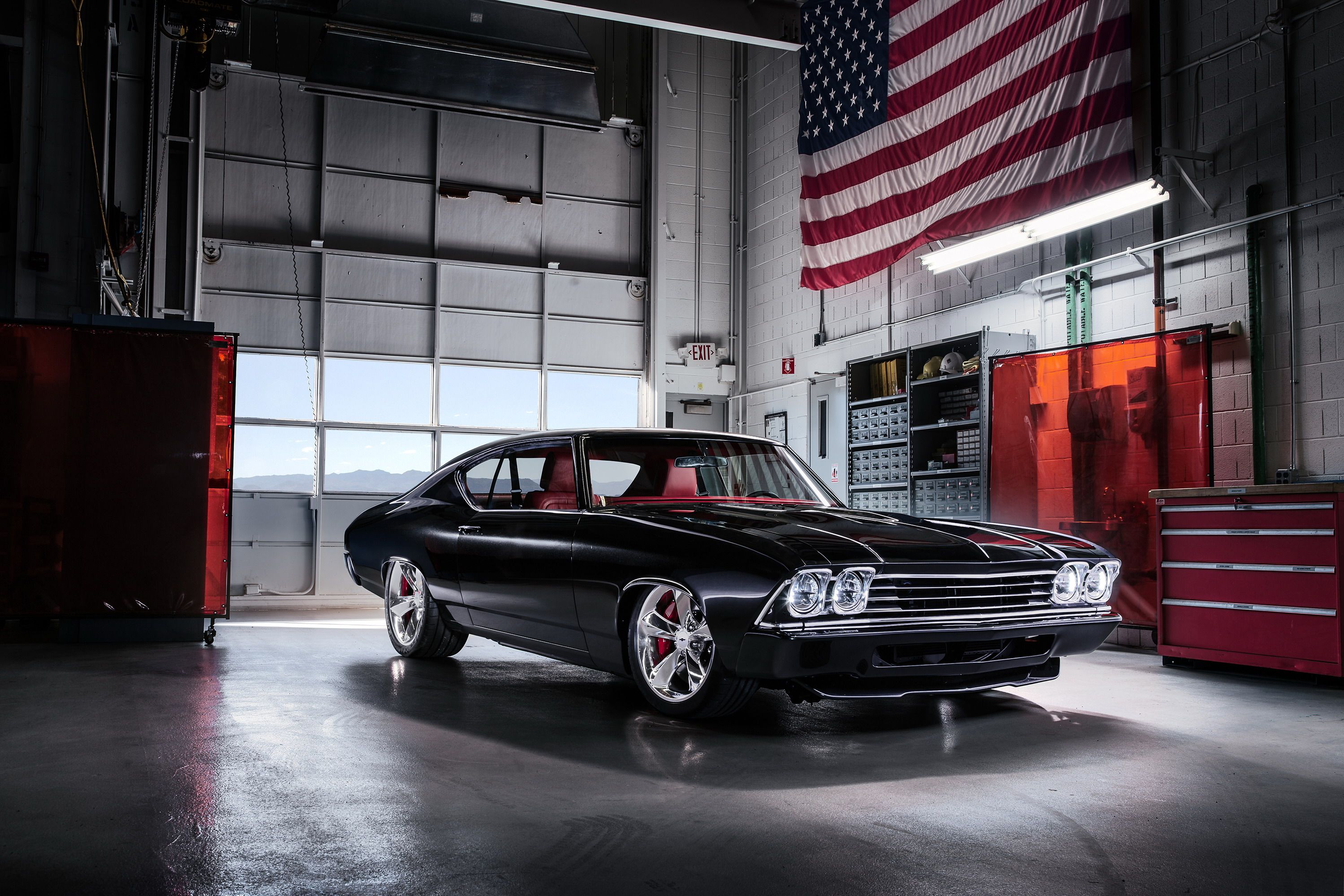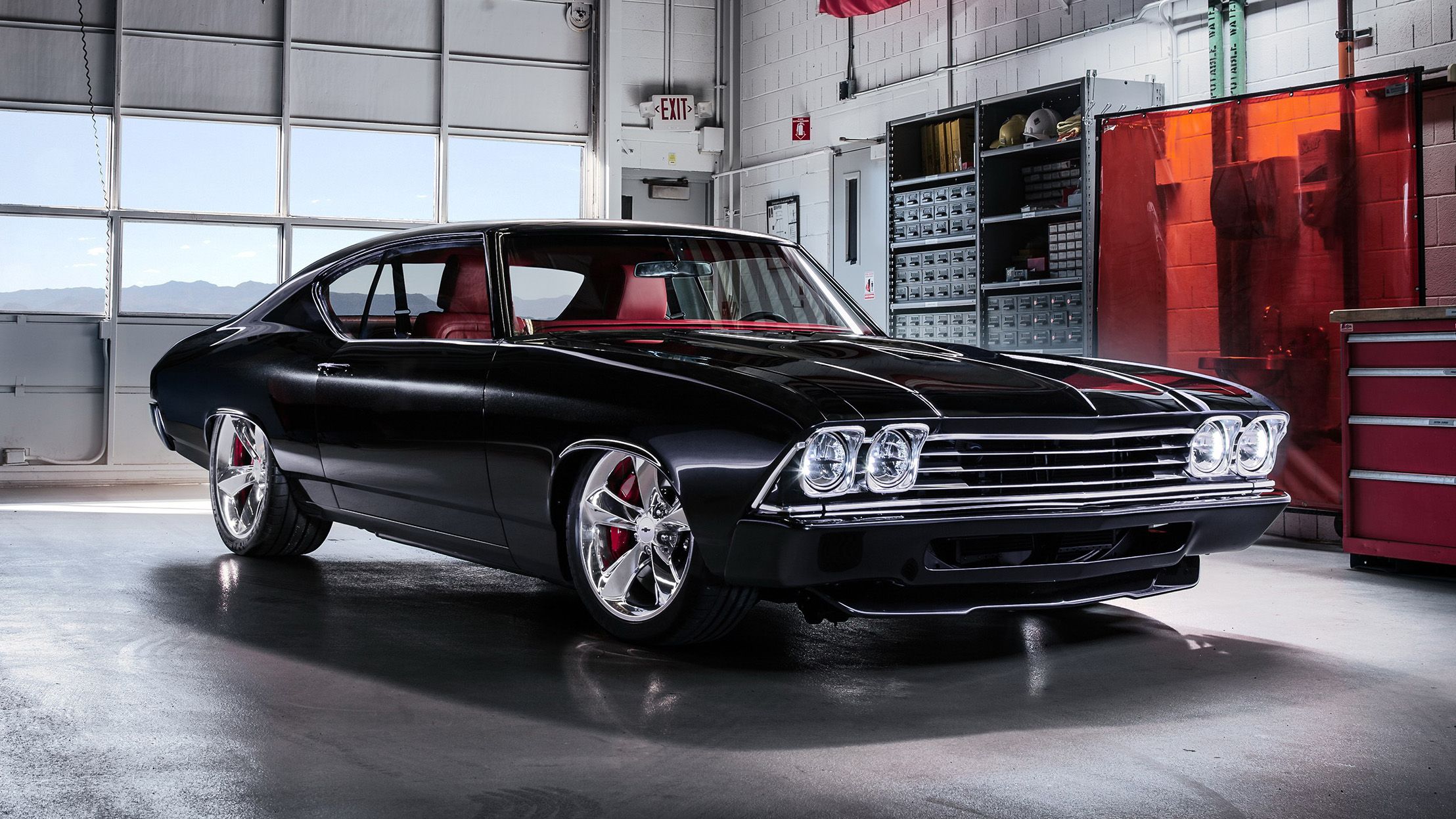The Chevelle nameplate may have died back in 1978, but the legacy of the once great midsize Chevy is still alive in the minds of car enthusiasts, especially for the late first-generation and second-generation models, which included some spectacular muscle cars. Chevrolet is very aware of that and decided to bring the Chevelle back into the spotlight with a special concept created for the 2016 SEMA Show.
Dubbed Slammer, the custom Chevelle is a full-fledged restomod that pairs the body of a 1969 coupe with modern underpinnings, bespoke wheels, and one of GM's newest and most technologically advanced crate engines.
"The ’69 Chevelle is one of the best-looking cars of the muscle car era and we didn’t want to mess with its classic cues or period-perfect proportions,” said Chevrolet designer Humberto Ortiz. "We’ve simply enhanced it where we could, knocking down the chrome in certain areas and tightening other exterior details such as the bumpers, grille and more. It’s still a 1969 Chevelle at a glance, but as you continue to examine it, the details really stand out."
The Chevelle Slammer was displayed alongside 20 other Chevrolet cars at the SEMA Show, but gained the most attention at the company's booth. Keep reading to find out why.
Continue reading to learn more about the Chevrolet Chevelle Slammer.
2016 Chevrolet Chevelle Slammer
- Make: Array
- Model: 2016 Chevrolet Chevelle Slammer
- [do not use] Vehicle Model: Array
Exterior
At first glance, the Slammer appears to be a standard 1969 Chevelle with modern wheels, less chrome, and a black paint. Upon closer inspection though, several details began to surface. For starters, Chevrolet revised many of the vintage body's features, giving it a smoother finish. This is mostly evident being on the fenders, which no longer feature the sharp character line just above the wheel arches. The panels have been rounded off and the Chevelle now sports a bespoke look without losing its classic appeal.
Chevy also removed most of the chrome, including the side strips, the bumpers, the window frame, and even some usually found in the front grille. The only chrome on the car can be seen around the headlamps, the front bumper, and the taillights. The custom wheels, which measure 18 inches at the front and 20 inches to the rear, are also finished in chrome and mask red brake calipers. The wheels were the most difficult to add, as it required some modifications to the chassis because of their size.
Interior
Inside, Chevy kept most of the 1969 Chevelle's layout unchanged. The classic dashboard, the door panels, and the center console are still there, and the red upholstery gives them a vintage look and provides a stunning contrast with the black exterior paint. Actually, it's not just the dash, panels, and console that are red, everything from the carpet and headliner to the seat are either trimmed or painted Adrenaline Red.
There are a few modern features too. The seats come from a 2016 Camaro, which is good news given that classic seats don't provide too much lateral support. Chevy also added a set of custom gauges that were specifically chosen to be compatible with the electronic signals from the Chevrolet Performance engine and transmission controllers.
Drivetrain
Under the hood of the Chevelle Slammer lurks a brand-new crate engine. Called the LT/376/535, it's a 6.2-liter V-8 that builds on the Gen V familly of Chevy small blocks and uses the LT1 block, which motivates the Corvette and the Camaro SS, "Hot Cam" system. The engine available via Chevrolet Performance uses direct injection that enables a high 11.5:1 compression ratio, and a high-performance camshaft and cylinder head combo.
The V-8 cranks out 535 horsepower and has a 6,800 rpm redline. To be honest, I expected Chevy to drop more oomph into this restomod, but that's not to say that it is underpowered. After all, the custom V-8 cranks generates 80 horsepower more than the Camaro SS' V-8.
All that power travels to the rear wheels through a new transmission too. I'm talking about the SuperMatic 4L75-E, an electronically controlled, four-speed automatic that features a torque capacity of 650 pound-feet. Also available via Chevrolet Performance, it has a smaller barrel that makes it easier to install in more compact vehicles, a unique high-strength input housing, heat-treated stator shaft splines, induction-hardened turbine shaft, eight-friction-plate 3-4 clutch, and specific valve-body calibration.
Furthermore, there's an air suspension system that changes the ride height at the push of a button and a Camaro-based performance brake system with six-piston front calipers.
Conclusion
The Chevelle is one of Chevy's most iconic nameplates and the second-generation model spawned some of the greatest muscle cars in history. Unfortunately, the model was replaced with the Malibu in 1978 and it has yet to return since. This short story is what makes the Slammer such an important project. Bringing an old Chevelle back to life is the least Chevy can do right now, and this build is definitely worthy of the name. Granted, I would rather stare at a 1970 model instead of a 1969, but I know it's not a good time go and get picky. Hopefully Chevrolet will come up with more builds like this and will give the old Chevelle the attention it deserves. Of course, that's as long as none of the nicely restored vintage Chevelles still floating around get hurt in the process.






